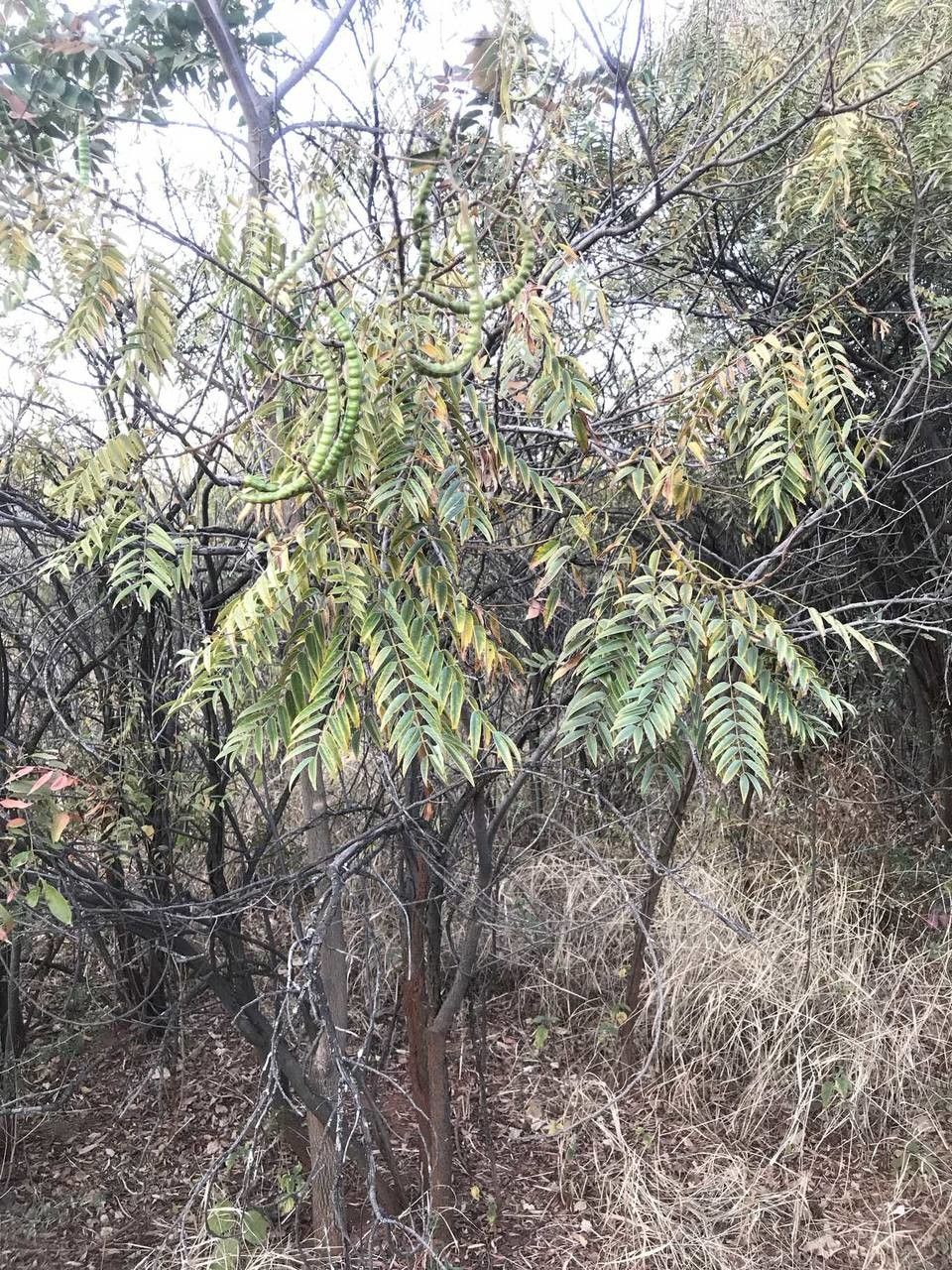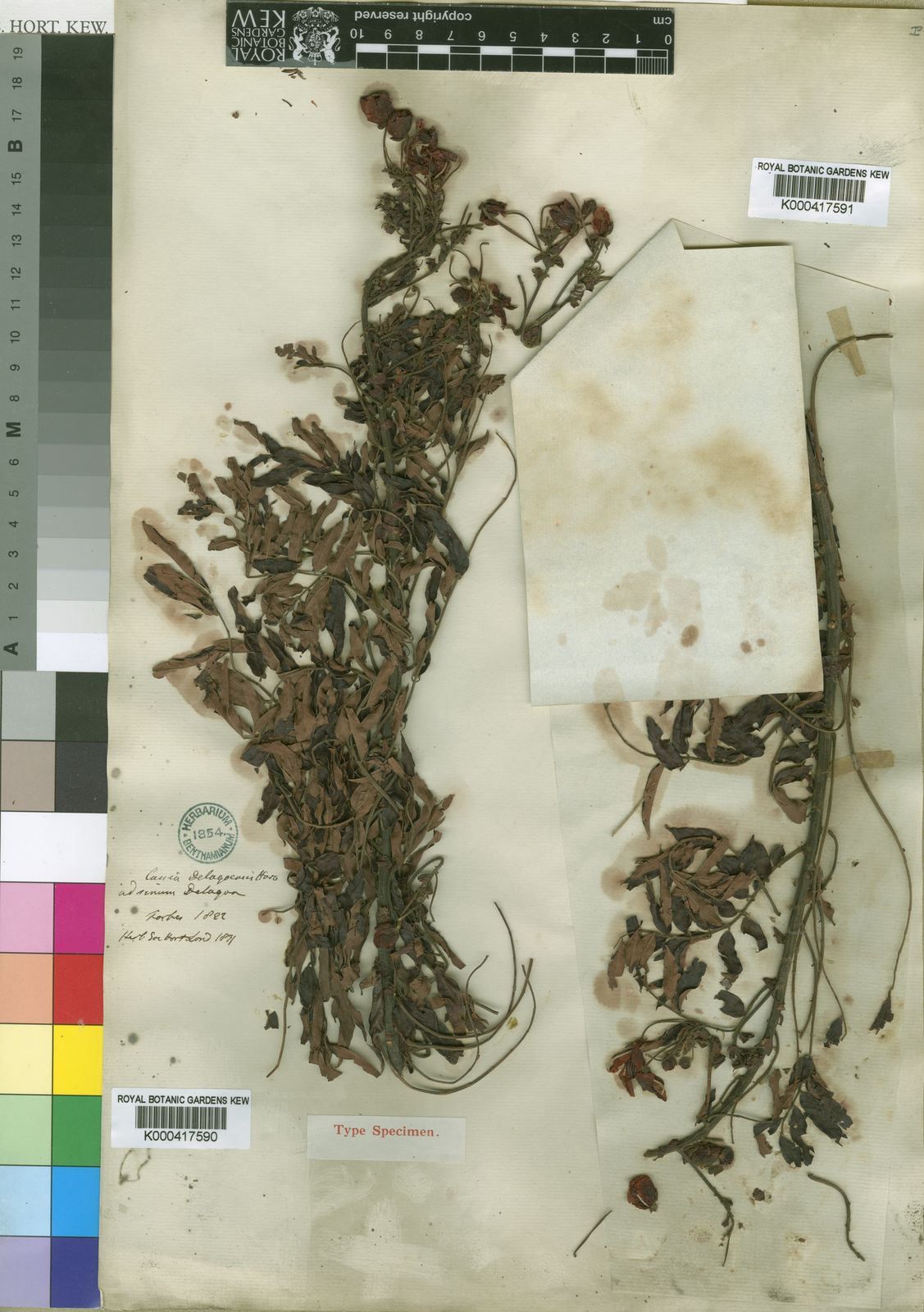Kalahari Tea, Bushman's Tea
senna petersiana
Also known as: ["Kalahari Tea","Bushman's Tea"]
Overview
A deciduous shrub native to southern Africa, known for its yellow flowers and traditional use as a herbal tea.
Benefits & Perks
["fragrant flowers","wildlife attractant (bees, butterflies, birds)","drought tolerant"]
Botanical Classification
| Phylum: | Magnoliophyta |
| Class: | Magnoliopsida |
| Order: | Fabales |
| Family: | Fabaceae |
| Genus: | Senna |
| Botanical Name: | Senna petersiana |
Plant Characteristics
Basic Information
- Category: Shrubs
- Suitable Location: outdoor garden bed in a sunny spot, or large container
- Suitable For:
- Is Weed: No
- Allergenicity: low
Environmental Needs
- Climate: {"temperatureRange":"10–35°C"}
- Hardiness: {"zones":"9–11"}
- Misting: rarely required, only if ambient humidity is very low
- Drainage: Fast-draining to prevent waterlogging.
- Soil Type: Well-draining, loamy soil with added organic matter; cactus or succulent mix can work well.
Maintenance Level
- Maintenance Level: moderate
- Toughness Level: high
- Pruning Frequency: Annually in late winter or early spring; light pruning can be done as needed.
- Pruning Intensity: Moderate; remove up to one-third of the plant if overgrown, but avoid heavy pruning during flowering
Care Details
Ideal Sunlight Coverage:
Full sun (6–8 hours of direct sunlight daily); tolerates partial shade in intense heat.
Sunlight Tolerance Tips:
Acclimate plants gradually to direct sunlight to avoid scorching; provide afternoon shade in hot climates; ensure proper ventilation if grown indoors.
Care Requirements
Care Difficulty
moderatemoderate
Sunlight
full sun to partial shade
Rotate plant for even light exposure; use sheer curtains to filter intense sun; avoid placing near reflective surfaces that intensify light.
Watering
every 7–10 days during active growth, reduce in winter
Water thoroughly until it drains from the bottom; allow soil to dry between waterings; avoid overwatering.
Soil
well-draining, sandy loam with moderate organic matter
pH: Slightly acidic to neutral (pH 6.0–7.0).
Use a pot with drainage holes; avoid heavy clay soils; test soil pH periodically.
Temperature
Warm temperatures (65–85°F / 18–29°C); prefers stable conditions; sensitive to frost.
Avoid sudden temperature changes; protect from cold drafts; maintain humidity in dry, warm conditions.
Fertilizing
every 4–6 weeks during growing season, none in winter
Apply fertilizer after watering to prevent root burn; flush soil occasionally to prevent salt buildup; reduce frequency in dormant periods.
Propagation
Methods
Stem cuttings or seed; stem cuttings are more reliable for home growers.
Step-by-Step Propagation Guide
- Take a 4–6 inch cutting.
- Remove lower leaves.
- Apply rooting hormone.
- Plant in medium.
- Keep moist and warm.
Best Time: Spring or early summer when the plant is actively growing.
Environment
Warm, humid environment with indirect light; maintain consistent moisture.
Medium
Well-draining potting mix (e.g., perlite and peat moss) or water for initial rooting.
Hormone
Rooting hormone is recommended to improve success rates.
Timeline
Roots may develop in 2–4 weeks; new growth typically appears within 6–8 weeks.
Tools Needed
Pruning shears, rooting hormone, small pots, well-draining medium.
Quick Tips
Use healthy, non-flowering stems; keep cuttings out of direct sun; maintain humidity with a plastic bag or dome.
Pruning & Repotting
Pruning Guide
Method
Use clean, sharp tools; make cuts just above a leaf node or bud; remove crossing or crowded branches.
Pruning Plan
Prune to maintain shape, encourage bushier growth, and remove dead or diseased parts.
Tools
Pruning shears, sterilizing solution, gloves.
Checklist
Sterilize tools; prune during dormancy; remove dead/diseased parts; shape the plant.
Repotting Guide
Best Season
Spring, before the active growing season begins.
Pot Size
Choose a pot one size larger (1–2 inches wider in diameter) than the current one.
Method
Remove plant gently; trim roots if necessary; place in a new pot with fresh soil; water lightly after repotting.
Suggestions
Repot every 2–3 years or when roots fill the pot; necessary to refresh soil and provide space for growth.
Checklist
Select appropriate pot; prepare new soil mix; handle roots carefully; water after repotting.
Advanced Care Tips
Watering Mastery
Watering Checklist
Check soil moisture; water deeply; ensure drainage; adjust for season.
How to Apply Water Properly
Water at the base of the plant, ensuring moisture reaches the root zone; water early in the day to minimize evaporation; ensure excess water drains away to prevent waterlogging.
Watering Schedule Tips
Water deeply once the top inch of soil is dry; reduce frequency in winter to prevent root rot.
Soil Improvement
Add perlite or coarse sand for drainage; incorporate compost for fertility; ensure soil is loose and airy.
Temperature Stress Management
Signs of Temperature Issues
Wilting, leaf drop, yellowing, or stunted growth; buds may fail to open.
Cold Stress
Growth slows or halts; leaves may turn yellow or brown; risk of frost damage or death in freezing temperatures.
Solution: Move to a warmer location; provide frost protection in cold climates; avoid placing near drafty windows or doors.
Hot Stress
Wilting, leaf scorch, or leaf drop; reduced flowering; soil may dry out too quickly.
Solution: Provide shade during peak heat; increase watering frequency; use mulch to retain soil moisture.
Fertilizing Guide
Fertilizing Checklist
Check fertilizer type; dilute correctly; apply during active growth; avoid winter feeding.
Fertilizing Method
Use a balanced liquid fertilizer diluted to half strength every 4–6 weeks during the growing season (spring to early fall); avoid fertilizing in winter.
Common Problems & Solutions
Toxicity Warning
Cats
ToxicCats are highly sensitive to the laxative effects of Senna petersiana due to their smaller size and unique metabolic processes. Ingestion can result in severe gastrointestinal distress and rapid dehydration, requiring immediate veterinary intervention.
⚠️ Symptoms:
🌿 Toxic Parts:
⚡ Toxic If:
if eaten
Dogs
ToxicThe anthraquinone glycosides in Senna petersiana can cause significant gastrointestinal upset in dogs. Prolonged exposure may lead to dehydration and electrolyte disturbances, which can be particularly dangerous for smaller breeds or those with pre-existing health issues.
⚠️ Symptoms:
🌿 Toxic Parts:
⚡ Toxic If:
if eaten
Humans
ToxicSenna petersiana contains anthraquinone glycosides, which act as potent laxatives. Ingestion can lead to severe gastrointestinal distress and electrolyte imbalances, particularly with chronic exposure. The physiological impact includes stimulation of peristalsis and potential dehydration due to excessive fluid loss.
⚠️ Symptoms:
🌿 Toxic Parts:
⚡ Toxic If:
if eaten
Frequently Asked Questions
Q: Is Senna petersiana toxic to pets?
A: Reliable information on toxicity to pets is not available.
Q: What are the traditional uses of Senna petersiana?
A: It is traditionally used as a herbal tea, particularly in southern Africa.
Q: How drought-tolerant is Senna petersiana?
A: It is highly drought-tolerant and suited to arid conditions.
Quick Reference
| Family: | Fabaceae |
| Care: | moderate |
| Light: | full sun to partial shade |
| Water: | every 7–10 days during activ |
Get Expert Care Tips
Download the Plantious app for personalized care reminders and plant identification!
Google Play App Store






